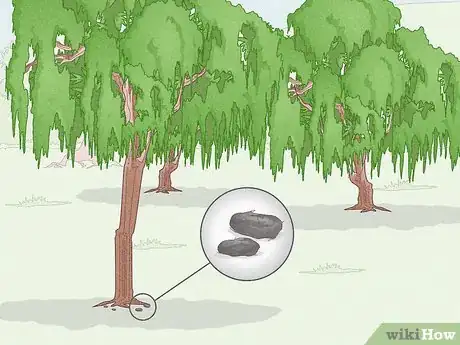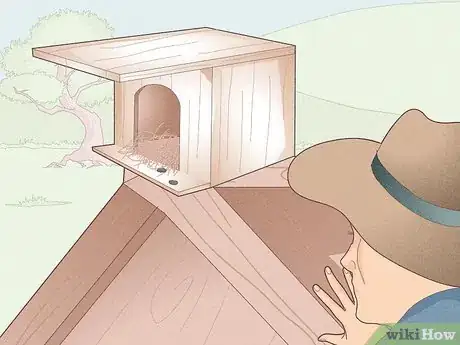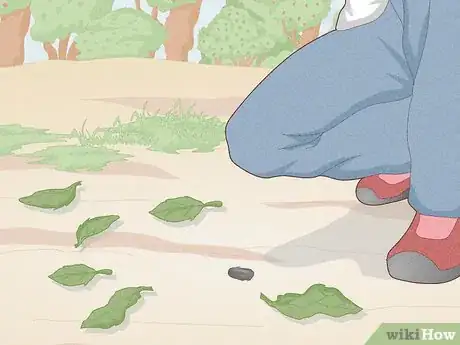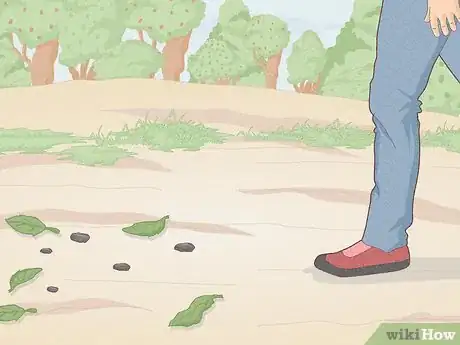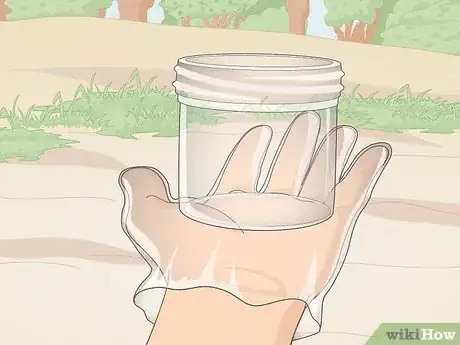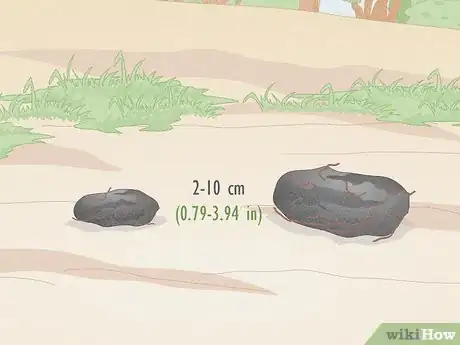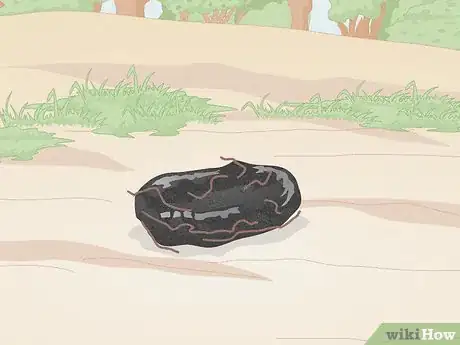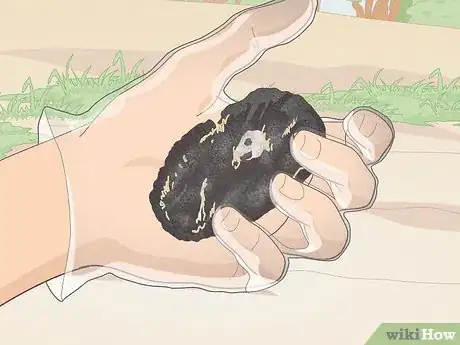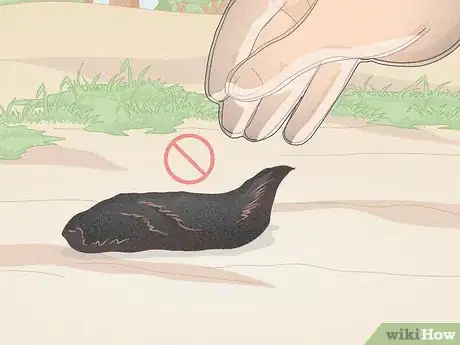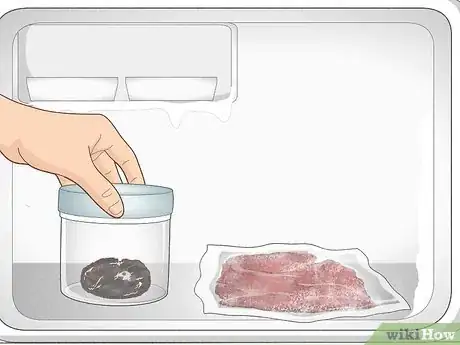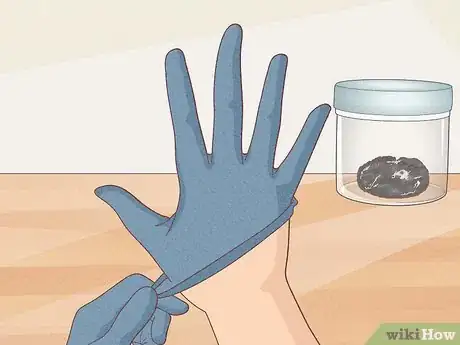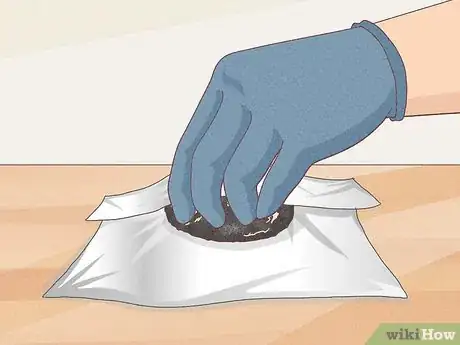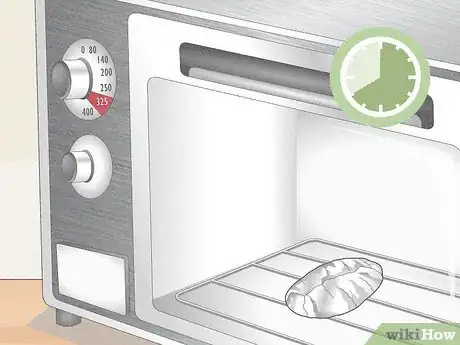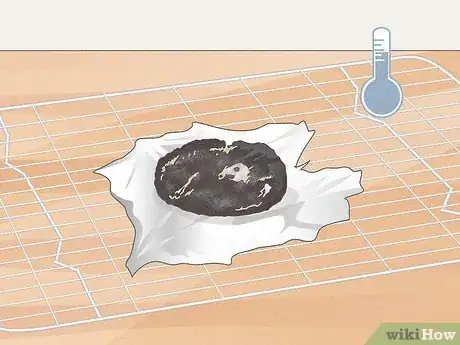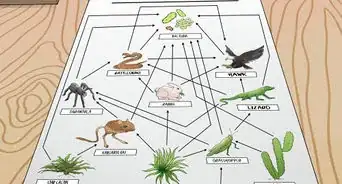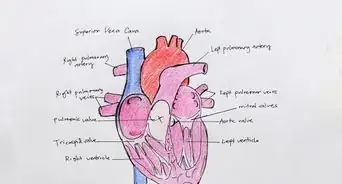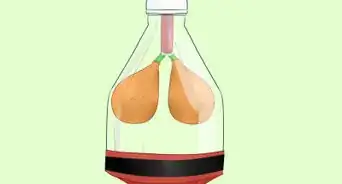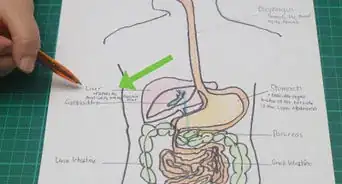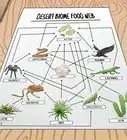This article was co-authored by wikiHow staff writer, Amber Crain. Amber Crain has been a member of wikiHow’s writing staff for the last six years. She graduated from the University of Houston where she majored in Classical Studies and minored in Painting. Before coming to wikiHow, she worked in a variety of industries including marketing, education, and music journalism. She's been a radio DJ for 10+ years and currently DJs a biweekly music program on the award-winning internet radio station DKFM. Her work at wikiHow supports her lifelong passion for learning and her belief that knowledge belongs to anyone who desires to seek it.
There are 8 references cited in this article, which can be found at the bottom of the page.
This article has been viewed 6,725 times.
Learn more...
Dissecting owl pellets can provide a fascinating glimpse into the lives of owls, but first you have to find some! If you've spotted owls in your area or know where they tend to hang out, you can easily find and collect owl pellets yourself. All you need is a pair of gloves, a few containers, and a willingness to hunt for them in the wild. As long as you sterilize the owl pellets first, you can safely dissect them at home.
Steps
Location Scouting
-
1Search for pellets at the base of tall trees in forested areas. Owls love to roost in large, tall trees, especially pine, cedar, oak, and ash trees. Densely wooded areas with clusters of big trees are a good bet. Owls tend to favor trees that stand out, so keep your eyes peeled for solitary trees near groups and thickets.[1]
- Pay attention to large trees with horizontal limbs close to the trunk.
- For dense areas, check the ground underneath the tree canopy, too.
- If you spot trees that are clearly a different species, like clusters of pines or cedars in a forest of mostly hardwoods, look around them for pellets.
-
2Check barns, man-made nesting boxes, and tall rural structures. If you know about any man-made nesting boxes nearby, examine the inside for pellets. Owls love sheltered areas like barn rafters, window ledges, grain silos, and hollow areas in tall structures that can protect them from wind and rain.[2]
- Search for pellets in the roosting place itself and on the ground around it.
Advertisement -
3Check the ground in areas where you’ve spotted owls previously. If you see or hear owls in your backyard or somewhere nearby every night, you may not have to go far to find some pellets! Look closely on the ground around tall trees, chimneys, ledges, barns, or poles where you’ve spotted owls roosting in the past.[3]
- Owls are creatures of habit so there's a good chance you'll find pellets this way.
-
4Scour the same area for more pellets once you find one. Owls are creatures of habit and usually hang out in the same areas every day. Once you find an owl pellet, broaden your search of that area and thoroughly check the ground for more.[4]
- You may find a large number of pellets left by the same owl or group of owls.
Identification and Collection
-
1Wear plastic gloves and bring a few small containers with you. Owl pellets contain bacteria and diseases, so don't touch them with your bare hands. Put on gloves before picking up the pellets and seal any that you find in a container. Bringing a few containers or plastic baggies is a good idea since fresh pellets can become a congealed mess in the same container.[5]
- A flashlight can be helpful, especially in heavily wooded areas where the sunlight doesn’t penetrate the tree canopies.
-
2Look for pellets that are between 2 and 10 cm (0.79 and 3.94 in) long. The size and shape of owl pellets vary by species, so it helps to know what species live in your area before you go pellet hunting. The most common owl species and their typical pellet sizes are:
-
3Recognize fresh owl pellets by their moist, glossy black exterior. Fresh pellets have rounded edges and are studded with bones and fur, just like the older pellet specimens. They're also made of highly compressed material, but instead of being dry, they’re moist and squishy. The exterior is black and shiny, almost like varnish, so fresh pellets are pretty easy to spot.[8]
- Fresh pellets can be dissected, too! Feel free to grab any that you see.
-
4Find dry, light pellets with splashes of white or gray on them. Pellets that have been sitting out for a month or longer look and feel completely dry. The material they’re made of is densely packed, very lightweight, and almost always gray or white in color, regardless of the species.[9]
- You may also see prey remains, like fur or feathers, near pellets.[10]
-
5Collect pellets with rounded edges and visible chunks of bone and fur. Owl pellets always have rounded edges rather than tapered ends. Since owls are predators, they tend to make meals out of mice, voles, rabbits, and squirrels. Most pellets will have small animal bones and fur sticking out of them.[11]
-
6Avoid any chunks or droppings with tapered ends. Droppings or pellets with tapered ends were probably made by a mammal. These kinds of droppings carry a lot of diseases, some of which are fatal to humans.[12]
- Fox droppings are common around barns and may contain bones and fur, so be sure to check for other owl pellet characteristics before picking those up.[13]
Storage and Sterilization
-
1Store unsterilized pellets in sealed containers in your freezer. Owl pellets often contain bacteria and organisms like grubs and larvae. If you’re not planning to sterilize and dissect the pellets when you get home, put the airtight containers in your freezer. Leave them sealed until you’re ready to use them.[14]
- The freezer kills any living organisms and dries out fresh pellets.
- Label the containers with a marker so the pellets aren’t mistaken for food.
-
2Put on plastic gloves before you handle the owl pellets. Never touch unsterilized owl pellets with your hands! When you’re ready to sterilize them, put on a pair of plastic or vinyl gloves. Grab the container from your freezer and open it up.[15]
-
3Place the pellets on a sheet of aluminum foil and wrap them up. Pull off a sheet of aluminum foil from the roll and place it on a counter or other flat surface. Scatter the owl pellets in a single layer on top of the foil and fold them up in a secure foil packet.[16]
- Pellets are sterilized in the oven and you don’t want them touching the oven rack or dishes. The foil also helps trap the heat that kills the bacteria.
-
4Heat the oven to 325 °F (163 °C) and bake the pellets for 40 minutes. Preheat your oven and let it heat up completely. Once it’s ready, place the foil packet of pellets directly on the rack in your oven. Keep the pellets in the oven for 40 minutes to fully sterilize them.[17]
- Just a heads up—the pellets will release an unpleasant odor as they heat up. You might want to crack a window!
-
5Take out pellets and let them cool before dissecting them. Grab an oven mitt and pull the foil packet out of your oven. Place the foil packet on a heat-safe surface. Once the pellets are cool enough to touch, you’re ready to dissect them.[18]
- Even though the pellets are sterilized, wearing gloves is still recommended when you’re handling them. Cover your work surface with paper towels and clean the surface thoroughly after dissecting the pellets.
Warnings
- Never handle owl pellets with your bare hands. Always wear gloves to protect yourself from bacteria and disease.⧼thumbs_response⧽
- Owls are a protected species in many areas, so avoid disturbing their nests, especially during breeding season.[20]⧼thumbs_response⧽
- If you aren't sure it's an owl pellet, just leave it and keep looking. Mammal droppings aren’t safe for humans to handle.[21]⧼thumbs_response⧽
Things You’ll Need
- Plastic gloves
- Airtight plastic containers
- Flashlight (optional)
- Permanent marker
- Aluminum foil
References
- ↑ https://mdc.mo.gov/conmag/1998/01/polite-term-pellets
- ↑ https://www.barnowltrust.org.uk/how-to-manage-land-for-barn-owls/roosting-nesting-places/
- ↑ https://ww2.rspb.org.uk/Images/Owlpellets_tcm9-133500.pdf
- ↑ https://www.allaboutbirds.org/news/what-are-owl-pellets/
- ↑ https://www.barnowltrust.org.uk/barn-owl-facts/barn-owl-pellet-analysis/
- ↑ https://mdc.mo.gov/conmag/1998/01/polite-term-pellets
- ↑ https://ww2.rspb.org.uk/Images/Owlpellets_tcm9-133500.pdf
- ↑ https://ww2.rspb.org.uk/Images/Owlpellets_tcm9-133500.pdf
- ↑ https://ww2.rspb.org.uk/Images/Owlpellets_tcm9-133500.pdf
- ↑ https://mdc.mo.gov/conmag/1998/01/polite-term-pellets
- ↑ https://mdc.mo.gov/conmag/1998/01/polite-term-pellets
- ↑ https://www.internationalowlcenter.org/owlpellets.html
- ↑ https://www.barnowlsurvey.org.uk/portal/p/Identification+Guide+-+Owl+Pellets
- ↑ https://www.wildlifecenter.org/sites/default/files/PDFs/OwlPelletWCCS.pdf
- ↑ https://www.internationalowlcenter.org/owlpellets.html
- ↑ https://www.internationalowlcenter.org/owlpellets.html
- ↑ https://www.internationalowlcenter.org/owlpellets.html
- ↑ https://www.internationalowlcenter.org/owlpellets.html
- ↑ https://www.internationalowlcenter.org/owlpellets.html
- ↑ https://www.barnowltrust.org.uk/barn-owl-facts/barn-owl-pellet-analysis/
- ↑ https://www.internationalowlcenter.org/owlpellets.html
